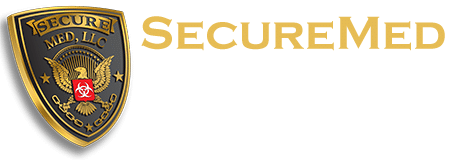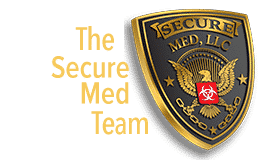What Happens After a Medical Waste Management Company Picks Up My Waste Containers?
When you walk into a familiar room, you may not individually notice everything in the space every time you step through the door. However, if you have worked in the healthcare industry for very long, there are a few items that you would certainly notice if they were no longer within sight in your office.
Two such items are the colored medical waste bags and sharps containers.
Some days, these various sized containers dangle, empty. But over the next few days – sometimes hours! – they start to fill up. It’s a familiar sight. Then, a medical waste management company takes the full containers and replaces them with new ones, and the cycle restarts.
Filling the Bags and Boxes
According to NIOSH, over 5.9 million tons of medical waste is produced each year, 85% of which is non-hazardous. However, state and federal regulations require that sharps, biohazardous and non-hazardous pharmaceutical waste, and chemotherapy waste be contained in special bags and boxes that protect healthcare providers and the general public from their contents.
Each type’s container can be identified by color and should each capture different medical waste materials:
- Sharps (Red Sharps Containers) – Needles, Ampules, Broken Glass, Blades, Razors, Staples, Trocars, Guide Wires
- Biohazard (Red Container or Red Liner in Container) – Infectious Waste, Blood Products, Contaminated Personal Protective Equipment (PPE), IV Tubing, Cultures, Stacks Blood or bodily fluids-soaked bandages
- Trace Chemo (Yellow Container) – Empty Vials/Ampules, Empty Syringes/Needles, Empty IV’s, Gowns, Gloves, Tubing. Aprons, Wipes, Packaging, Bulk Chemo, Pathological Waste Culture dishes and devices used to transfer cultures
- Pharmaceutical (Blue Container) – Pills, Injectables, Antibiotics Blood products like plasma or tissues containing blood

Methods of Disposing of Medical Waste
Once each bag or box gets full, the time comes to dispose of their contents. Again, due to the potentially infectious nature of the items, they cannot be tossed into a dumpster or landfill – doing so could result in significant fines or worse!
The medical waste should be picked up, transported and disposed of securely by a third party contractor. A tracking manifest and certificate of destruction should always be provided! This assurance of complete destruction of your medical waste should come after your appropriate method of destruction has been completed at a predetermined facility:
- Incineration
Chemotherapy waste is highly toxic and is kept separated from general medical waste. It must be packaged in DOT-approved containers and removed by a hazardous waste disposal company. It is then typically incenerated. - Thermal (Autoclave)
Autoclaving, or steam sterilization, is often the disposal method of choice for cultures, stocks, and human blood-related items. Sharps, including hypodermic needles, syringes, scalpel blades, pipettes, broken glass or other contaminated sharp items are collected in puncture-proof containers and are disposed of in this way, as well, to prevent what could be highly-infectious specimens from being inadvertently exposed to the public. Much of the waste treated by autoclaving and shredding ends up in a sanitary landfill. - Irradiation (Microwave)
An alternate, ‘greener’ solution to incineration, some pathological wastes (i.e. tissues, organs, body parts, and body fluids removed during surgery and autopsy) can be sanitized through microwaves and then disposed of as ordinary solid waste in a landfill or a ‘waste-to-energy’ plant.
Choosing a Medical Waste Management Company
As the generator of the medical waste, you are ultimately responsible for the proper disposal of it and the consequences of failing to do so… even if you delegate treatment to a third party. For this reason, it’s essential that you are careful about selecting your waste disposal partners. Don’t be afraid to ask questions… and lots of them!
You must ensure their ability to complete proper disposal of your sharps waste and red bag waste according to state and federal governing laws, including OSHA medical facility compliance, HIPPA compliance, Environmental Protection Agency (EPA) compliance, and more.
Take the stress out of disposing of your medical waste – give SecureMed a call today to learn more and to request a FREE quote!







